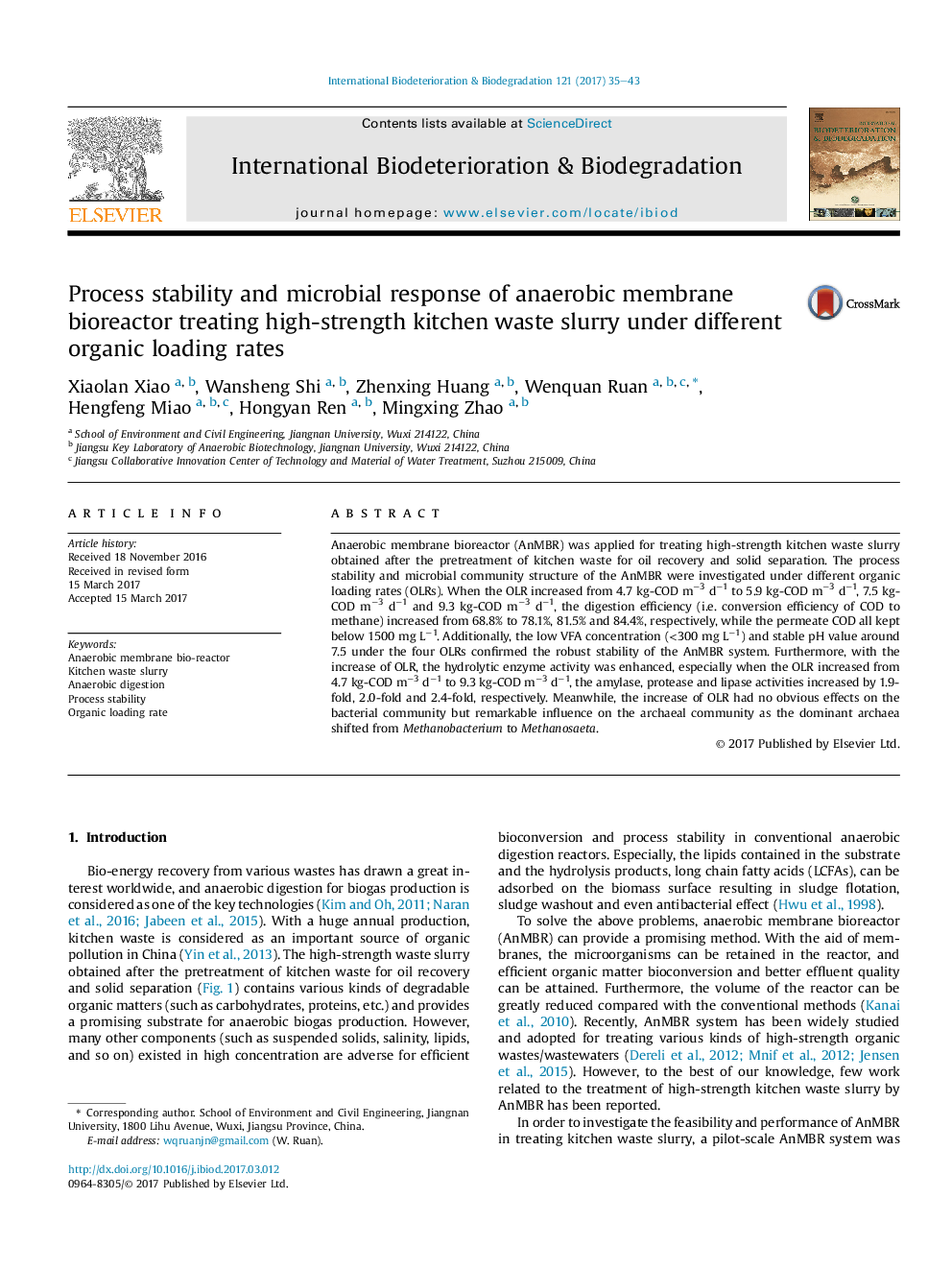| Article ID | Journal | Published Year | Pages | File Type |
|---|---|---|---|---|
| 5740407 | International Biodeterioration & Biodegradation | 2017 | 9 Pages |
Abstract
Anaerobic membrane bioreactor (AnMBR) was applied for treating high-strength kitchen waste slurry obtained after the pretreatment of kitchen waste for oil recovery and solid separation. The process stability and microbial community structure of the AnMBR were investigated under different organic loading rates (OLRs). When the OLR increased from 4.7 kg-COD mâ3 dâ1 to 5.9 kg-COD mâ3 dâ1, 7.5 kg-COD mâ3 dâ1 and 9.3 kg-COD mâ3 dâ1, the digestion efficiency (i.e. conversion efficiency of COD to methane) increased from 68.8% to 78.1%, 81.5% and 84.4%, respectively, while the permeate COD all kept below 1500 mg Lâ1. Additionally, the low VFA concentration (<300 mg Lâ1) and stable pH value around 7.5 under the four OLRs confirmed the robust stability of the AnMBR system. Furthermore, with the increase of OLR, the hydrolytic enzyme activity was enhanced, especially when the OLR increased from 4.7 kg-COD mâ3 dâ1 to 9.3 kg-COD mâ3 dâ1, the amylase, protease and lipase activities increased by 1.9-fold, 2.0-fold and 2.4-fold, respectively. Meanwhile, the increase of OLR had no obvious effects on the bacterial community but remarkable influence on the archaeal community as the dominant archaea shifted from Methanobacterium to Methanosaeta.
Related Topics
Life Sciences
Environmental Science
Environmental Science (General)
Authors
Xiaolan Xiao, Wansheng Shi, Zhenxing Huang, Wenquan Ruan, Hengfeng Miao, Hongyan Ren, Mingxing Zhao,
